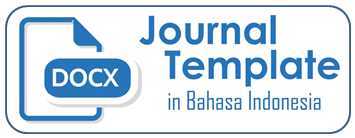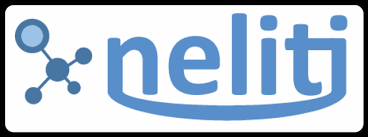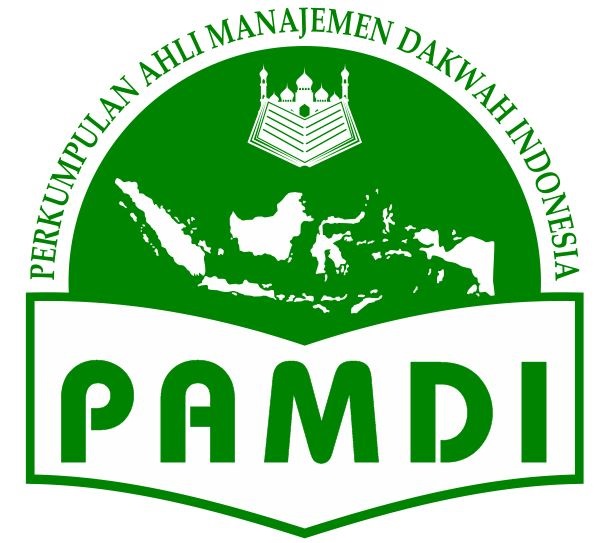STRATEGI KOMUNIKASI DAKWAH TAREKAT NAQSYABANDIYAH DALAM PENDAMPINGAN SECARA SPRITUAL TERHADAP KORBAN PENYALAHGUNAAN NARKOBA DI TANJUNGBALAI
DOI:
https://doi.org/10.56874/almanaj.v5i1.2303Keywords:
Dakwah, Narkoba, Spiritual, Strategi Komunikasi, Tarekat.Abstract
In responding to the problem of drug abuse, the Naqsyabandiyah Order is here to provide an alternative method to rehabilitate victims of drug abuse using the amaliah of the Naqsyabandiyah Order such as dhikr and wirid, talqin, khataman and everything that is intended to bring oneself closer to Allah SWT. This study aims to find out about how to use the Naqsyabandiyah Order method for drug abuse. This study uses a qualitative approach with a descriptive type. Data were taken through in-depth interviews and observations as well as documentation. Data analysis was carried out using the Milles Huberman model. The results of this study are the Naqsyabandiyah Order's da'wah communication strategy applied to victims of drug abuse by means of an intensive persuasive communication process to build a sense of comfort and security in each client who is a victim of drug abuse which can be a starting point in eliminating anxiety and building hope for victims of drug abuse to recover. Communication techniques used for victims of drug abuse include reflective communication techniques and assertive communication techniques.
References
Al-Ghazali, Abu Hamid Muhammad. Ihya’ Ulum Al-Din . Beirut: Dar Al-Kutub Al-Ilmiyah, 2005.
Anas, Ahmad, and Hendri Hermawan Adinugraha. “Dakwah Nabi Muhammad Terhadap Masyarakat Madinah Perspektif Komunikasi Antarbudaya.” Ilmu Dakwah: Academic Journal for Homiletic Studies 11, no. 1 (July 1, 2017): 53–72. https://doi.org/10.15575/idajhs.v11i1.1356.
Arief Rochman, Boy, Achmad Mudrikah, and Supyan Sauri. “Implementation of Tariqah Dhikr in Strengthening the Character of Tahfidz Santri in Al-Qur’an Al-Falah Islamic Boarding Schools and Suryalaya Islamic Boarding Schools.” International Journal Of Science Education and Technology Management. Vol. 1, 2022. https://ijsetm.my.id43.
Ayuni, Risa Dwi, and Syafiq. “Komunikasi Dakwah Dalam Merehabilitasi Pecandu Narkoba Di BNN Kota Banjarbaru.” Mutakallimin: Jurnal Ilmu Komunikasi 2, no. 2 (2019).
Bruinessen, Martin van. Kitab Kuning, Pesantren Dan Tarekat. Yogyakarta: Gading Publishing, 2012.
———. Tarekat Naqsyabandiyah Di Indonesia. Bandung: Mizan, 1996.
Bungin, Burhan. Penelitian Kualitatif, Komunikasi, Kebijakan Public, Dan Ilmu-Ilmu Sosial Lainnya. Jakarta: Kencana Prenada Media, 2017.
Choirin, Muhammad, Arik Dwijayanto, Laila Yumna, and Yusuf Ahmed Muaz. “Nurturing Moderate Islam: Strategic Da’wah Communication in The Digital Era for Generation Z.” International Journal Ihya’ ’Ulum al-Din 26, no. 1 (June 20, 2024): 108–18. https://doi.org/10.21580/ihya.26.1.20008.
Fahrudin, Munawar Rahmat, M. Wildan Bin H.M. Yahya, Makhmud Syafei, and Maman Abdurrahman. “Exploring Students’ Perspectives On Sufism And Tarekat In Islamic Education.” Jurnal Pendidikan Islam 10, no. 1 (2024): 1–12. https://doi.org/10.15575/jpi.v10i1.33521.
Ghony, Djunaidi, and Fauzan Almanshur. Metode Penelitian Kualitatif . Yogyakarta: Ar-Ruzz Media, 2016.
Gunawan, Reka, and Abdul Muhid. “The Strategy Of Da’wah Bil Hal Communication: Literature Review.” Komunike: Jurnal Komunikasi Penyiaran Islam XIV, no. 1 (2022).
Khairani, Leylia, and Rahmanita Ginting. “Islamic Da’wah Communication Strategy In The Digital Era: An Analysis Of The Utilization Of Social Media To Spread Islamic Values.” Proceeding International Seminar on Islamic Studies 6, no. 1 (2025).
Mardani. Penyalahgunaan Narkoba Dalam Perspektif Hukum Islam Dan Hukum Pidana Nasional . Jakarta: PT Raja Grafindo Persada, 2008.
Miles, M.B, Huberman, A.M, & Saldana, J. Qualitative Data Analysis, A Methods Sourcebook. 3rd ed. USA: Sage Publications, 2014.
Millah, Zaimatul. “Communication Strategy Of Dakwah In Community Of The Modern Era (Case Study In Lengkong Village, Sukorejo District, Ponorogo Regency).” Qaulan 2, no. 2 (2021). https://prosiding.iainponorogo.ac.id/index.php/ficosis/article/view/37.
Musliamin. “The Government Communication Strategy in Effort to Prevent Drug Abuse in the Most.” Vol. 2, 2021.
Muslimin, and Sri Hertimi. “Da’wah Communication Strategy of Kiai Marogan Islamic Boarding School Palembang in the Mass Media.” Wardah: Jurnal Dakwah Dan Kemasyarakatan 24, no. 1 (2023).
Nuraedah, Nuraedah, and Mutawakkil Mutawakkil. “The Da’wah Communication Strategy of Jamaah Tabligh in Sub-District of Tondo, Palu City.” Ilmu Dakwah: Academic Journal for Homiletic Studies 14, no. 2 (December 31, 2020): 297–316. https://doi.org/10.15575/idajhs.v14i2.10220.
Partodiharjo, Subagyo. Kenali Narkoba Dan Musuhi Penyalahgunaannya. Jakarta: Esensi, 2007.
Patra, Jayanta Kumar, Gitishree Das, Leonardo Fernandes Fraceto, Estefania Vangelie Ramos Campos, Maria Del Pilar Rodriguez-Torres, Laura Susana Acosta-Torres, Luis Armando Diaz-Torres, et al. “Nano Based Drug Delivery Systems: Recent Developments and Future Prospects.” Journal of Nanobiotechnology 16, no. 1 (September 19, 2018). https://doi.org/10.1186/s12951-018-0392-8.
Rahmatunnair, and Saripah A. “Da’wah Communication and Economic Empowerment of Muslims: Opportunities, Challenges, and Strategies.” Palakka: Media and Islamic Communication 4, no. 2 (2023).
Ramadoni, Muhamad Afdoli, Achmad Syarifudin, Nuraida, Muhammad Randicha Hamandia, and Riza Yulianti. “Social And Spirit Goals: The Communication Strategy Of Da’wah Activities One Day One Juz (ODOJ) Program In Palembang.” Ath-Thariq: Jurnal Dakwah Dan Komunikasi 8, no. 1 (2024). https://doi.org/10.32332/ath-thariq.v8i1.7769.
Rasyad, Abdul, Reiza D. Dienaputra, Mumuh Muhsin Zakaria, and Raden Muhammad Mulyadi. “Tarekat Dan Modal Sosial Dalam Sistem Pendidikan Nahdlatul Wathan, 1966-1997.” Jurnal Sejarah Citra Lekha 6, no. 2 (December 5, 2021): 68–79. https://doi.org/10.14710/jscl.v6i2.31812.
Rulam, Ahmad. Metode Penelitian Kualitatif . Yogyakarta: Ar-Ruzz Media, 2016.
Rusmana, Asep, and Wan Zailan Kamaruddin Wan Ali. “Sufism Healing Methods for Drug Rehabilitation in Inabah of West Java, Indonesia.” TEMALI?: Jurnal Pembangunan Sosial 5, no. 2 (November 16, 2022): 153–60. https://doi.org/10.15575/jt.v5i2.21234.
Setiawan, Albi Anggito, and Johan. Metodologi Penelitian Kualitatif. Bandung: CV. Jejak, 2018.
Setyo Budi, Agung, and Novi Andayani Praptiningsih. “Communication Strategy Of Da’wah In Establishing Santri With Qur’anic Character At The International Muhammadiyah Boarding School (IMBS) Miftahul’ulum Pekajangan-Pekalongan.” Journal of Scientific Communication x, no. x (2020): 43.
Stone, Judi. Counselling Guidelines?: Alcohol and Other Drug Issues. Government of Western Australia Mental Health Commission, 2019.
Suriati. “Dakwah Dan Hedonisme.” RETORIKA?: Jurnal Kajian Komunikasi Dan Penyiaran Islam 3, no. 1 (April 30, 2021): 1–27. https://doi.org/10.47435/retorika.v3i1.577.
Yumni, Auffah. “Pelaksanaan Ibadah Dengan Mengintegrasikan Fiqh Dan Tasawuf.” NIZHAMIYAH Jurnal Pendidikan Islam Dan Teknologi Pendidikan VII (2017).
Downloads
Published
Issue
Section
License
- All articles published in Al Manaj: Jurnal Manajemen Dakwah are licensed under a Creative Commons Attribution-ShareAlike 4.0 International (CC BY-SA) license. This means anyone is free to copy, transform, or redistribute articles for any lawful purpose in any medium, provided they give appropriate attribution to the original author(s) and Al Manaj: Jurnal Manajemen Dakwah, link to the license, indicate if changes were made, and redistribute any derivative work under the same license.
- Copyright on articles is retained by the respective author(s), without restrictions. A non-exclusive license is granted to Al Manaj: Jurnal Manajemen Dakwah to publish the article and identify itself as its original publisher, along with the commercial right to include the article in a hardcopy issue for sale to libraries and individuals.
- Although the conditions of the Creative Commons Attribution-ShareAlike 4.0 International (CC BY-SA) license do not apply to authors (as the copyright holder of your article, you have no restrictions on your rights), by submitting to Al Manaj: Jurnal Manajemen Dakwah, authors recognize the rights of readers and must grant any third party the right to use their articles to the extent provided by the license.

This work is licensed under a Creative Commons Attribution-ShareAlike 4.0 International License.

.jpg)










